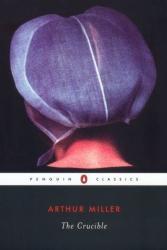
Arthur Miller creates a horrifying and suspenseful narrative in his iconic play The Crucible with the intention of realistically depicting a terrible chapter in our country’s history. The play follows a group of young women, led by Abigail Parris, as they accuse hundreds of people of witchcraft, and cause a massive panic among the townspeople.
The Salem Witch trials is a topic that is mostly looked over in our history classes, so this book was extremely interesting in that it depicted an event that I only had surface level knowledge of. I was fascinated with the intense depth of all of the characters, and the almost rational actions of the villains. This book was perfect to read right before Halloween. Despite these things, the narrative can be somewhat slow at times, and while I enjoyed the historical anecdotes embedded in the book, they distracted me from the actual story. However, the rest of the book was great and I highly recommend it.
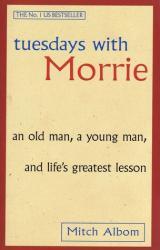
Tuesdays with Morrie is the most moving and sentimental novel I have ever read. The first person narrative told by the author Mitch Albom, walks through Albom’s life changing journey with his old college professor, Morrie. Albom spends a series of Tuesdays learning from Morrie, who had been diagnosed with ALS and has a very limited time to live. In this true story Morrie Schwartz speaks valuable truth and offers insight into what is important in life and why he wasn’t scared to die. My favorite quote from the novel is “Once you learn how to die, you learn how to live.” Tuesdays with Morrie teaches all its readers how important everyday truly is, and how to not take life for granted.
Reviewer Grade:12
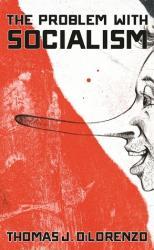
In this seemingly uninteresting yet brightly covered book lies an abundance of information. In just 192 pages, DiLorenzo is able to highlight what looks to be every possible problem with socialism. He does not just point out what he thinks to be problems, however. He then goes on to back up every argument made in this book with true, real life evidence or facts with credible sources, such as in the 1970s when Chile adopted socialism and destroyed it's own economy. To keep the sinking ship that was the economy going, Chile printed massive amounts of money and kept it's destroyed economy going (barely). At times this book can get a bit technical, but that can be expected of most nonfiction novels. Overall, this book was an very informational read and an eye opener on the problems with socialism and the people who support it.
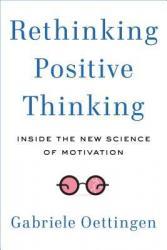
In her book, Ms Oettingen teaches readers how to use the science of positive thinking to their advantage. After years of research, she has found that mere "positive thought" does not produce optimal results for people's lives. Instead, a specifically targeted approach to positive thought and positive action is best. This is what she teaches readers. I would recommend this book to people seeking to improve their lives through targeted approaches of thought and action. Readers 16 and up are appropriate.
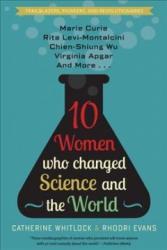
In her book, "10 Women Who Changed Science and the World", Catherine Whitlock authors the biography of ten women who were deeply influential in science. For each woman, she writes a biography of their life and what significant contribution they made to their field. This book is well-written and informative, and neither too long nor too short for each woman's biography. I would recommend this book for readers of ages 13 and up. This book should interest those interested in women's contributions to science.
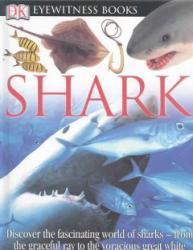
In her book about sharks, Ms Macquitty teachers readers all about the fascinating salt-water creatures. The book is well done for young ages, with plenty of interesting facts. There are also many pictures to illustrate her points. Well researched and informative, this book is sure to engage young readers.
I would recommend this book to any young readers from 5 through Elementary school. Any children fascinated with sharks and wishing to learn more will be pleased by this read.
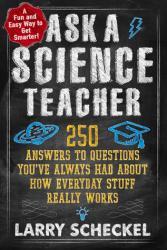
In his book "Ask a Science Teacher", Larry Scheckel lists 250 science questions and answers them all in detail for readers. Each series of questions is divided under sections. For example, there is a section about Sound and Music and a section about Chemistry. He spans a broad range of scientific topics, from biology in the question "How many cells are in the body?" to history of science in question "Did Issac Newton develop calculus?" Mr. Scheckel answers the questions thoroughly with interesting detail. He engages readers. I would recommend this book to anyone with science interests and questions. This book is appropriate for ages high school and up.

In her book “The Tapping Solution For Weight Loss and Body Confidence”, Jessica Ortner guides readers through a step-by-step process for not only losing weight but also for increasing self-compassion and thus increasing self-confidence and self-esteem. Tapping, also known as EFT (emotional freedom technique), is a method of lowering cortisol levels in the body. By tapping on specific meridian acupressure points on the face, neck, and underarms while describing the issue or stressor, it has been scientifically proven that the brain re-wires and cortisol reduces. In her book, Ms Ortner not only teaches readers how to tap in order to aid weight loss, since low cortisol levels have been linked with greater weight-loss success. She also helps readers to learn how to be more self-compassionate in their weight-loss journey, thus decreasing stress and increasing self-confidence.
I enjoyed this book for its positive message to women to be confident in who they are at this and every moment of life, even within the challenges we face. I would recommend this book to readers from ages 16 and up, especially young women or women looking to increase their self-compassion.
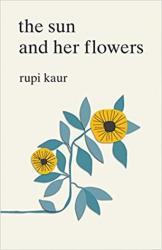
The Sun and Her Flowers is a book filled with relatable poetry. The poems are mainly focused towards a female audience, and bring to light the realities and harshness of life. The book has three parts that are based on the flowers, blooming, withering, and rebirth. The poems follow those specific categories with happy, sad, and hopeful poems centered around it. The poems are also centered around heartbreak and love, some of the poems share lovely scenes of first dates; where others are tragically centered around heartbreak. Poems of heartbreak talk of crushes not sharing love for the other, and relationships that took a turn. The poems are easily relatable to teenagers and the daily struggle of their lives. I gave this book a high rating because it not only made me laugh and smile but it also moved me to tears several times throughout, the poetry is touching on an outstanding level.
Reviewer Grade: 12
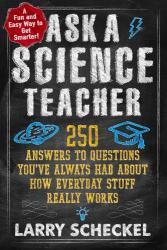
In his book "Ask a Science Teacher", Larry Scheckel lists 250 science questions and answers them all in detail for readers. Each series of questions is divided under sections. For example, there is a section about Sound and Music and a section about Chemistry. He spans a broad range of scientific topics, from biology in the question "How many cells are in the body?" to history of science in question "Did Issac Newton develop calculus?" Mr. Scheckel answers the questions thoroughly with interesting detail. He engages readers.
I would recommend this book to anyone with science interests and questions. This book is appropriate for ages high school and up.
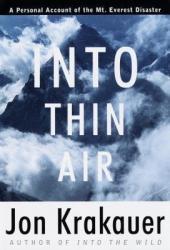
Into Thin Air is a narrative story of the author and climber, Jon Krakauer.
He establishes that ever since he was a kid, climbing Mt. Everest was his dream. He later accomplishes his ambition down the line, but with more consequences than anything rewarding.
Into Thin Air uses a consistent tone of language to identify whether the situation represents relief or tension. This gathers more intensity for those who are interested in thrillers and adventurous stories. The narrative offers a variety of twists and turns throughout the plot in order to continue the use of curiosity and unpredictability of the end. The story is very interesting, and builds upon every single detail, from the start until the end of the book.
Reviewer Grade: 11

In her book 'Thank and Grow Rich', Pam Grout introduces readers to the benefits of practicing gratitude. While practicing gratitude does not, as Mrs. Grout states, make readers physically rich, the scientific benefits are vast. Outlining these benefits of increased health, greater happiness, and thus a more fulfilling life, Mrs. Grout encourages readers to join in the practice of gratitude.
This is a lovely book celebrating the practice of giving thanks. Filled with experiments and applications of gratitude, this book is very user-friendly. I would recommend this book to readers looking to improve their positive-thinking and gratitude habits. Ages 14 and up are appropriate for reading.
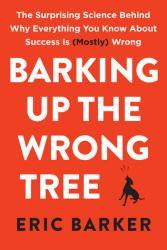
In his book Barking Up the Wrong Tree, Eric Barker explains secrets to success in many areas of life. Using the latest in scientific research, he explains how to "find work-life balance using the strategy of Genghis Khan, the errors of Albert Einstein, and a little lesson from Spider-Man", how to lower stress and increase self love, and move through life more happily
Among other lessons, Mr. Barker teachers readers why most of what they previously believed about success is "wrong". Then he goes on to explain how they can improve themselves and their lives through lessons provided by unlikely - but entertaining - sources.
I would recommend this book to anyone looking to improve success in their lives. It is an excellent, helpful, and humorous read that will be good for any age range 16 and above.
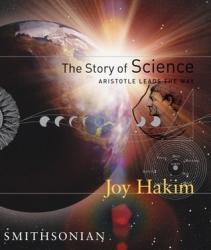
In her three book series, the Story of Science, author Joy Hakim introduces readers to the fundamental concepts within science and its history. Through creative narration, Mrs. Hakim captivates readers and makes learning interesting. By introducing the basic concepts of science through the eyes of a number of famous scientists, she helps learners to comprehend the scientific concepts while also enjoying the experience of reading.
Mrs. Hakim is a wonderful author. Her books convey a good knowledge of the subject with creativity in presentation. I would recommend this book to readers ready to learn an overview of science and its history.
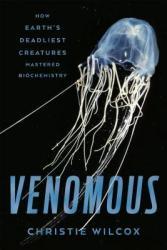
Explore the effects of many venoms and venomous animals from across the world and their interactions with humans from the stunningly potent bullet ant to the awesomely efficient komodo dragon in this nonfiction exploration of various creatures' venoms. The author does a commendable job of portraying dangerously venomous animals in ways to give them well earned respect andf fear, rather than just fear mongering. The book follows some of the author's experiences and the experiences of others to accurately show how the animals behave and how their venoms act in a personable method. The author also describes how the different venoms work in a scientific approach with her personal experiences with stings, providing multiple perspectives on the effects of certain venoms. Overall, I enjoyed how the author provided multiple perspectives of different animals and how she showed how dangerous some animals are while instilling respect for said animals. I would recommend this to anyone who has attended college level biology courses who want to study the venoms of certain animals due to the use of more advanced terminology.
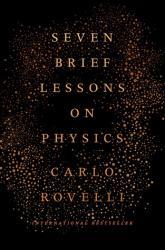
This book is an informative and very useful guide to several aspects of physics, ranging from relativity to the various theories surrounding the very fabric of our universe. Anyone reading this should, however, have some background information to basic physics as this book covers some basics surrounding more complex concepts of physics such as quanta and time. The author simplifies the concepts down and organizes them into seven lessons that become progressively more complex or confusing so I would suggest any potential readers to not skip around the book. I rather enjoy the progression of the book and how the author made the complex theories understandable to the average person who is interested in the more confusing concepts of physics. I would recomend this to anyone who wants to understand more about physics and get an small taste of the most complex ideas of physics.
Reviewer's Grade: 11
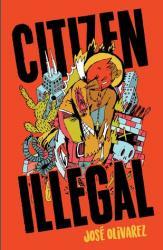
I want to start by saying this book is definitely intended for an older, more mature, audience. This book uses many curse words and makes some drug references. “Citizen Illegal” is a series of poems depicting life as a legal citizen citizen of the United States whose parents are illegal immigrant. I picked up this book primarily because it was on the adult reading list in addition to being interested in a different perspective on illegal immigrants. I have never read a book in verse before so I really enjoyed the way the speaker developed. The book was pretty good and I felt brought me a new perspective on illegal immigrants.
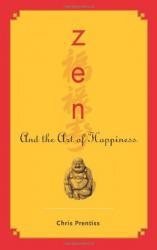
This non-fiction book is a great guide full of life improvement tips.
In this book, Chris Prentiss guides you through different strategies on how to be the best you, how to be the happiest you, and so on. The author teaches you different ways to be happy based on many Chinese philosophies and personal experience. What I liked about this book, was how simple it was. The methods presented by the author can be done by anybody and doesn’t require anything else, yet, he still shows how effective his methods are through telling stories about successful friends of his who listened to his advice.
Reviewer Grade: 7
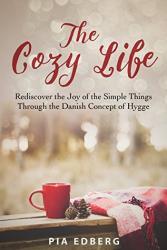
This guide provides an interesting approach to improving your life at home with a danish concept called hygge. In this book, different and interesting danish methods are presented, including how to make the most of your time with loved ones, what to avoid when participating in hygge, how to make your house a more relaxing atmosphere. Towards the end, there is a cookbook sharing many of the author’s favorite danish dishes. I found this book very helpful at giving ideas on ways to make your living space more relaxed and inviting, using things like lighting, plants, and cleanliness. In conclusion, I think this would be a nice book for anyone looking for ideas to throw a family reunion or looking to be a little more relaxed.
Reviewer Grade: 7
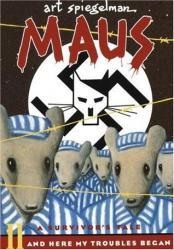
Maus II, the sequel/continuation to Maus, continues the story of Vladek Spiegelman told by his son in the form of a comic book. This book is amazing because, just like the first, it uses an animal metaphor to easily show the reader who is who in the story. Maus II takes a darker turn because Vladek is now in the depths of Aushwitz. I love these books and their creative outlook on the War and the Holocaust. No other historical book has made me this intrigued and want to continue reading.





 Ruth Holley Library will be temporarily closed for approximately one week starting Mon., Dec. 2 to complete roof repairs.
Ruth Holley Library will be temporarily closed for approximately one week starting Mon., Dec. 2 to complete roof repairs.